
Ducati Diavel Service Manual: Cylinder compression test
Note
The on-screen icons used during this procedure are explained in a table at the end of this section.
Engine performance is directly correlated to the pressure that can be measured in the combustion chambers of the two cylinders. Pressure which is too high/low or an excessive difference between the two cylinders will cause a drop in engine performance and can cause engine breakdowns.

To reach the vertical head spark plug lift the tank up as specified under the section 8 - 2 "removal of the fuel tank" and fit a drift under it.
Run the engine so that it warms up to the point that the fan is tripped at least once.
Open the throttles completely.
Remove the ht leads (1), unscrewing the nuts (2) of both spark plugs.
Remove the spark plug from the cylinder to be tested.
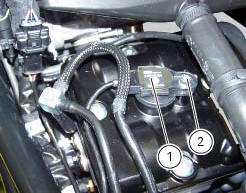
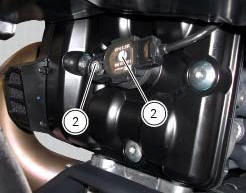
Connect the ht lead to earth to prevent sparking.
Screw the cylinder compression cable part no.552.1.038.1A into the spark plug compartment.
Connect the pressure sensor part no. 552.1.039.1A to the cable with part no. 552.1.038.1A..
Turn on the dds diagnosis instrument (3) referring to the paragraph "connection to the motorcycle".
Connect the power and diagnosis cable (measurement module) (4) part no. 97900.0222 To the measurement module connector (b) of the dds (3).
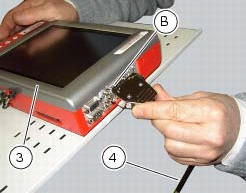
Connect the pressure sensor part no. 552.1.039.1A to the outlet (a) or (c) of cable (4) part no. 97900.0222.
Note
Measure the compression on one cylinder at a time.
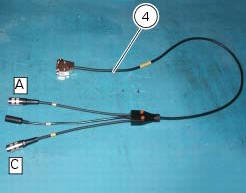
On the dds diagnosis instrument (3), select the "measurement module" function by pressing the corresponding icon; then press the "cylinder compression" icon (d) followed by the "start" icon (e).
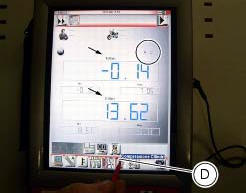
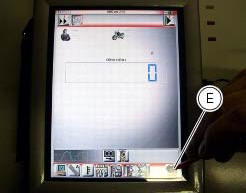
The socket to which the cable (measurement module) (4) is to be connected is indicated on the screen with a capital letter: a, b or c.
Turn over the engine with the starter motor until the pressure stops rising.
Check the pressure in each cylinder:
- Standard value: 11 to 12 bar;
- Minimum value: 10 bar;
- Maximum permissible difference between cylinders: 2 bar.
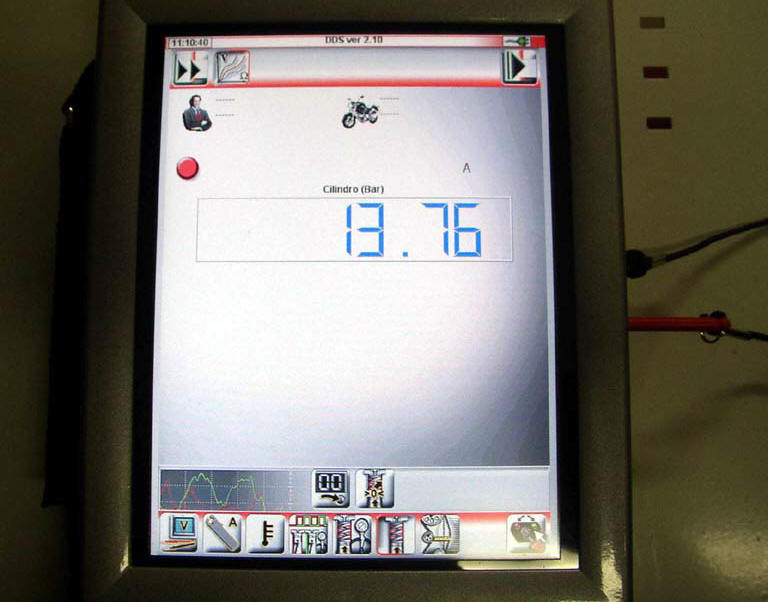
An excessively high pressure value can be caused by:
- Build up of deposits in the combustion chamber.
An excessively low pressure value can be caused by:
- Gas escaping between the cylinder head and the barrel;
- Worn valve seats;
- Bent valve stems;
- Incorrect valve clearances;
- Worn cylinder or piston rings.
Refit the spark plugs and position the coil-spark plugs wires (1) in the corresponding compartments and tighten the nuts (2) to a torque of 10 nm (min. 9 Nm max. 11 Nm) (sect. 3 - 3, Frame torque settings).
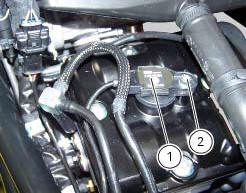

Refit the tank as indicated in section 8 - 2 "refitting the fuel tank".

 Check the engine oil pressure
Check the engine oil pressure
Note
The on-screen icons used during this procedure are explained in a table at
the end of this section.
To measure the pressure of the lubrication circuit, use the engine oil pressure
test po ...
 Fuel pressure test
Fuel pressure test
Note
The on-screen icons used during this procedure are explained in a table at
the end of this section.
Undo the screws (2) and remove the flange cover (1).
Remove one of the two pipes o ...
Other materials:
Operations to be carried out by the dealer
List of operations to be performed at 1000 km
Reading of the error memory with dds on the engine control units,
vehicle and abs
Change the engine oil
Change the engine oil filter
Check the indicators and lighting
Check the safety devices (side ...
Evaporative emissions canister
Sealing washer
Union
Hose clip
Hose
Clamp
"T" fitting
Hose
Support
Special screw
Rubber mounting
Hose
Hose clip
Evaporative emissions canister
Hose
Spring
Spare parts catalogue
Diavel abs evaporative emissions canister
Diavel carbon
abs
evaporative emissions ...
Indication of range reached for service
When service coupon threshold is achieved, upon every key-on the system
displays the indication of the type of
intervention that is required (oil service or desmo service).
The (red) warning is activated as a large icon for 10 seconds upon every key-on
(1) then as a small warning that
remai ...